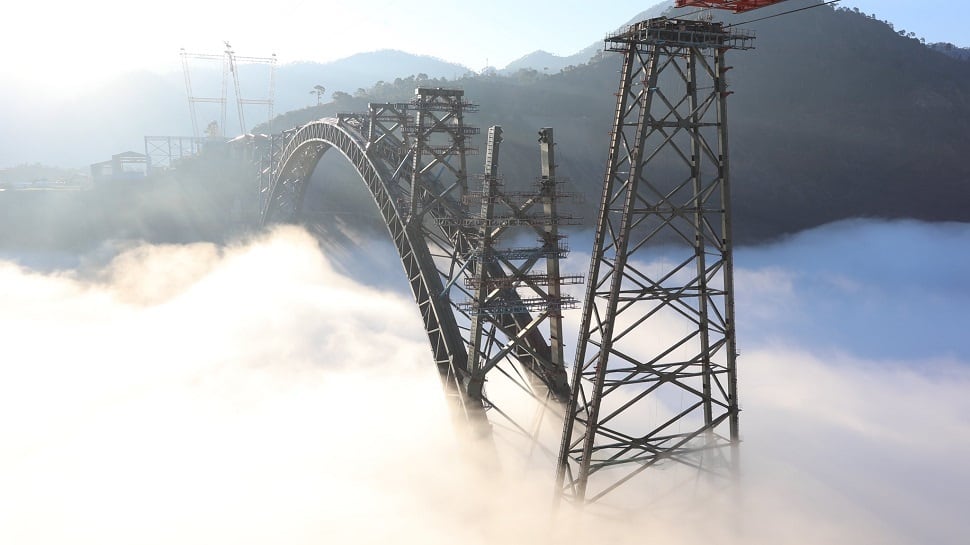Incredible photos of world's highest Chenab bridge shared by Indian Railways, see pics
The iconic arch-bridge will be 35 meters taller than the iconic Eiffel Tower in Paris and will withstand up to 8 magnitude earthquakes and high-intensity blasts.
- Railway Minister Ashwini Vaishnaw recently tweeted the picture of the Chenab bridge
- The bridge was seen over the clouds
- The iconic arch bridge on river Chenab is 1.3 km long
Trending Photos
) Image for representation
Image for representation To give you the feel of being on the 7th cloud, the Indian Railways is constructing the iconic arch bridge on river Chenab which is 1.3 km long and is located in district Reasi, Jammu, and Kashmir. Railway Minister Ashwini Vaishnaw recently tweeted the picture of the upcoming bridge which was seen over the clouds. “The world's highest #arch #ChenabBridge over the clouds,” read the tweet.
The world's highest #arch #ChenabBridge over the clouds. pic.twitter.com/0fkKFc4Nte
— Ashwini Vaishnaw (@AshwiniVaishnaw) February 7, 2022
The construction of the world's highest railway bridge across the Chenab river in Jammu and Kashmir's Reasi district is nearing completion. The Rs 1,250-crore bridge, which is 359 meters above the Chenab river bed, will be 35 meters taller than the iconic Eiffel Tower in Paris, officials said.

As per official sources, the bridge is designed for blast load in consultation with DRDO for the first time in India. The iconic arch bridge will be able to withstand up to 8 magnitude earthquakes and is designed to bear earthquake forces of highest intensity zone-V in India. The bridge is a part of the Udhampur-Reasi-AnantnagSrinagar-Baramulla railway project and can withstand a blast of 30 kg of explosives.
Read also: Heritage train in snow-clad Shimla attracting tourists in a large number
The overall length of the bridge is 1,315 meters, having 17 spans, of which the main steel arch portion across the Chenab river is 476 meters in length and its height is 359 meters above the river bed. The project work is being carried out by AFCONS Construction Company through Konkan Railway.
बादलों के बीच अद्भुत इंजीनियरिंग का नमूना पेश करता चिनाब रेल पुल।
जम्मू-कश्मीर के रियासी जिले में चिनाब नदी पर बन रहे 359 मीटर ऊंचे चिनाब पुल का एक शानदार दृश्य।#Infra4India pic.twitter.com/5uIW7mZqoJ — Ministry of Railways (@RailMinIndia) February 8, 2022
Officials overseeing the project on the ground said that more than 1,300 workers and 300 engineers have been working round-the-clock to complete the bridge in time. The construction work started in 2004, but the work was briefly stopped in 2008-09 because of the safety of rail passengers due to frequent high-velocity winds in the area.
With inputs from agencies
Stay informed on all the latest news, real-time breaking news updates, and follow all the important headlines in india news and world News on Zee News.
Live Tv







)
)
)
)
)
)
)
)
)
)
